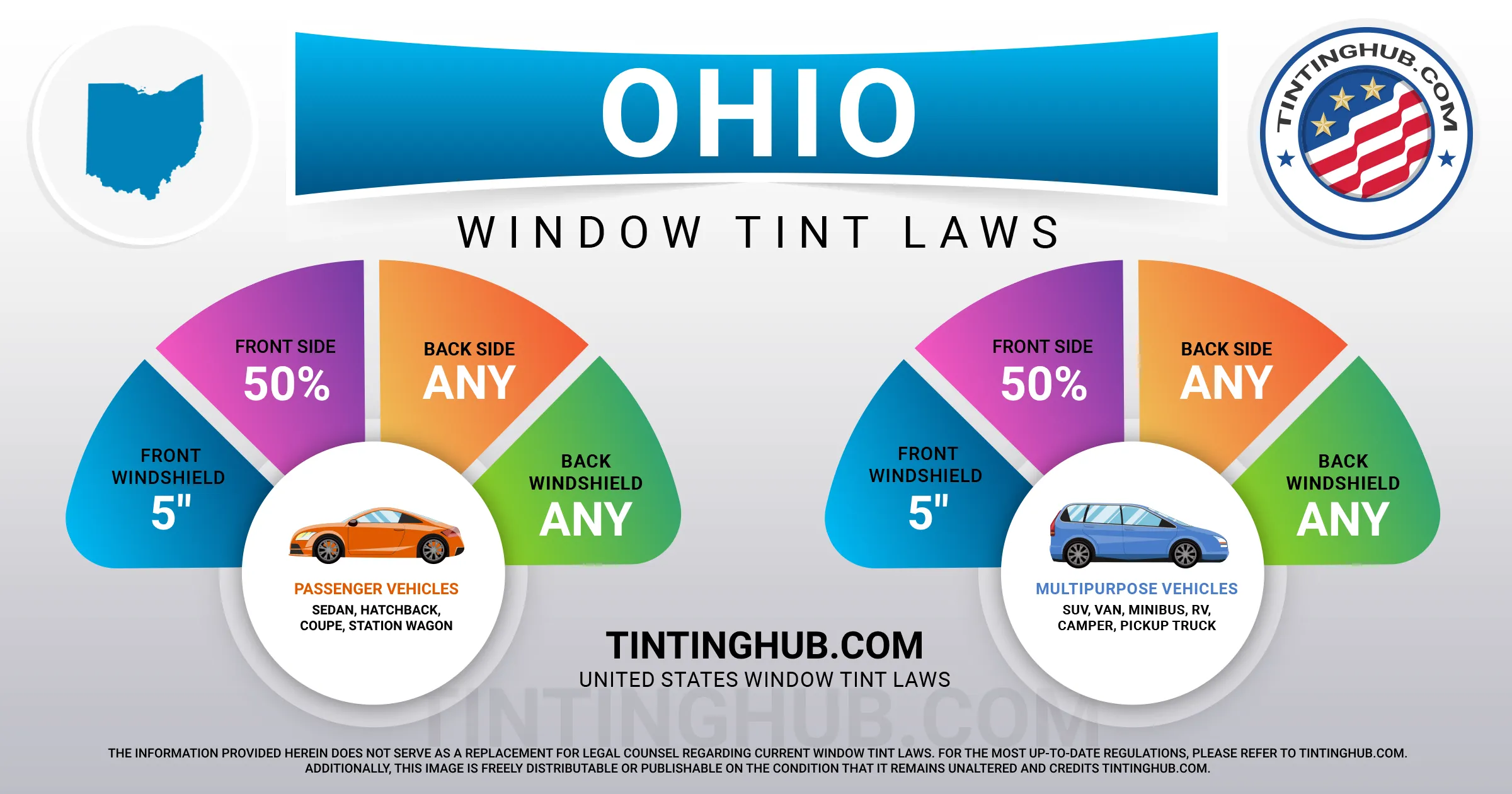Ohio Window Tint Laws (Last Update 2024)

Ohio’s Car window tinting regulations came into effect in 2004, and understanding them is vital to ensure you’re in compliance with the law. In this comprehensive guide, we’ll provide you with all the essential information regarding Ohio’s car window tinting laws, from permissible darkness levels to reflection and additional regulations you should be aware of.

Ohio Window Tint Darkness Regulations
When it comes to car window tinting in Ohio, the key parameter to keep in mind is VLT, or Visible Light Transmission. This metric determines the percentage of visible light allowed through your car’s windows, and it varies for sedan cars and SUVs/vans.
Tint Darkness for Sedans:
- Windshield: Non-reflective tint is allowed on the top 5 inches of the windshield.
- Front Side Windows: Must allow more than 50% of light in.
- Back Side Windows: Any level of darkness is permitted.
- Rear Window: Any level of darkness is permitted.
Tint Darkness for SUVs and Vans:
- Windshield: Non-reflective tint is allowed on the top 5 inches of the windshield.
- Front Side Windows: Must allow more than 50% of light in.
- Back Side Windows: Any level of darkness is permitted.
- Rear Window: Any level of darkness is permitted.
Window Tint Reflection Rules in Ohio
Window tint serves not only to provide privacy but also to reduce glare and heat. Ohio law addresses the issue of window reflection, ensuring safety and visibility.
Tint Reflection for Sedans:
- Front Side Windows: No reflectorized materials are permitted.
- Back Side Windows: No reflectorized materials are permitted.
Tint Reflection for SUVs and Vans:
- Front Side Windows: No reflectorized materials are permitted.
- Back Side Windows: No reflectorized materials are permitted.
Additional Ohio Window Tint Regulations
Aside from darkness and reflection rules, Ohio has other important regulations related to window tinting that you should be aware of:
- Side Mirrors: There are no restrictions on side mirrors.
- Restricted Colors: Ohio does not ban any specific colors of tint.
- Certificates: Manufacturers of window tinting film must certify the products they sell in Ohio. Make sure to ask your dealer if they use certified film.
- Stickers: Legal tinting mandates a sticker for identification. You should place this sticker between the film and glass on each tinted window.
- Medical Exceptions: Ohio’s laws do not grant any exemptions for medical reasons.
- Penalties: Non-compliance with Ohio’s window tinting laws deems it a misdemeanor, potentially resulting in a fine of around $120.
Keep in mind that interpretations of Ohio’s tinting laws and regulations may vary depending on your county or place of residence. Therefore, it’s advisable to verify the information with your local BMV or law enforcement authorities.
Stay Informed
Our information regarding window tint laws in Ohio is current as of 2023. If you observe any inaccuracies or require updates in the provided information, please feel free to contact us. We commit to delivering precise and dependable information on window tint laws, ensuring that you remain well-informed and compliant with the law.
As a trusted industry leader, we dedicate ourselves to keeping you well-informed about the most recent developments in window tinting regulations.